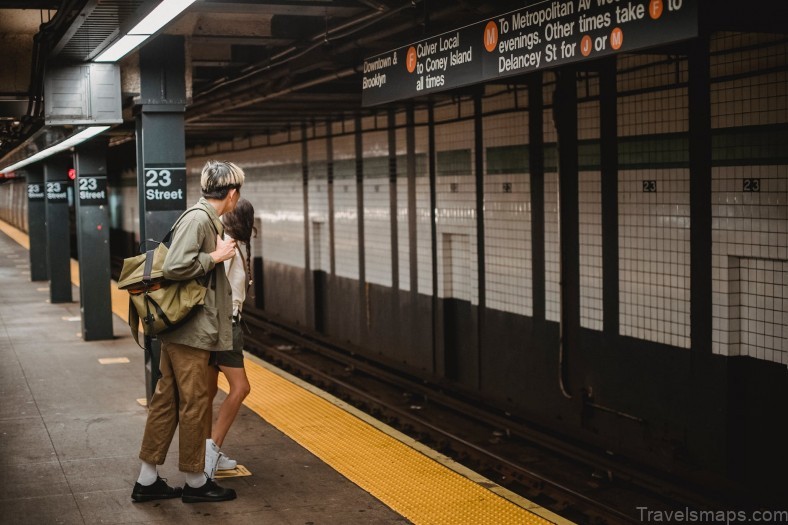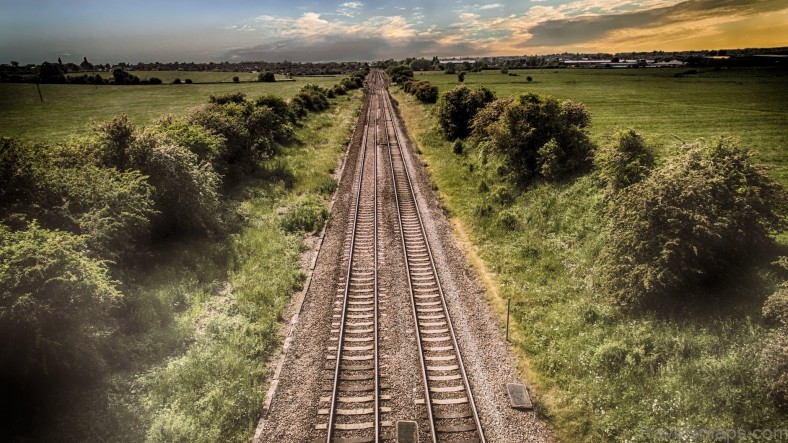
London’s Underground system, also known as the Tube, is a vast network of trains that crisscrosses the city, connecting various neighborhoods and landmarks. Navigating this extensive network can be a daunting task for visitors and even locals. That’s why we have put together this comprehensive guide to help you navigate the Tube like a pro.
Whether you’re a first-time traveler or a frequent commuter, our guide will provide you with valuable tips and tricks to ensure efficient travel in the city. From planning your journey to understanding fare zones, buying tickets, and navigating interchanges, we’ve got you covered.
Planning your journey is the first step to a hassle-free Tube experience. Using the Tube map, you can easily identify the stations you need to reach your destination. Take advantage of online journey planners and mobile apps to find the best routes, check for any disruptions, and estimate travel times.
When it comes to buying tickets, there are several options available. The most convenient and cost-effective way is to use an Oyster card or contactless payment. These options allow you to tap in and out of the Tube without the need for paper tickets. If you’re planning to use the Tube extensively, consider getting a travelcard, which offers unlimited travel within certain zones for a fixed price.
Understanding fare zones is essential to avoid unnecessary charges. The Tube network is divided into zones, and the fare you pay depends on the number of zones you travel through. Make sure to check the fare zone map and plan your journey accordingly to avoid any surprises.
For those who prefer contactless payment methods, such as Apple Pay or Google Pay, the Tube accepts these forms of payment. Simply tap your smartphone or contactless card at the ticket barriers to pay for your journey. It’s quick, convenient, and eliminates the need for carrying cash or purchasing a separate ticket.
Navigating interchanges can be a bit tricky, especially at the busiest Tube stations. Pay attention to signs and follow the crowd to make smooth transfers between different lines and stations. Some interchange stations, like King’s Cross St Pancras and Bank, can be complex, so it’s important to plan your route in advance and familiarize yourself with the layout.
Accessibility is a priority on the London Underground, and efforts have been made to provide step-free access and other facilities for passengers with disabilities. Many stations now have lifts, ramps, and other accessibility features to ensure a comfortable journey for all. Look out for the blue wheelchair symbol on the Tube map to identify stations with step-free access.
With our guide, you’ll be able to navigate London’s Underground system with ease. Whether you’re a tourist exploring the city’s attractions or a local commuting to work, the Tube Planner Chronicles will be your go-to resource for efficient travel in London.
Planning Your Journey
Planning your journey on London’s Underground system is the key to a seamless travel experience in the bustling city. To start, familiarize yourself with the Tube map, a comprehensive guide to the network of lines and stations. The map is color-coded and clearly indicates the different lines, making it easy to navigate.
When planning your route, consider using online journey planners or mobile apps that provide real-time information on train schedules, delays, and alternative routes. These tools can help you find the quickest and most efficient way to reach your destination, taking into account any disruptions or engineering works on the Tube network.
For finding the best connections, pay attention to interchange stations where multiple lines intersect. These stations often have clear signage and helpful staff to assist you in navigating the complex network. Take note of the line colors and names to ensure you board the correct train.
Additionally, consider the time of day and peak travel hours when planning your journey. Rush hour can be particularly busy, so it’s advisable to avoid traveling during these times if possible. By planning ahead and being aware of the Tube map, routes, and connections, you can make the most of your journey on London’s Underground.
Buying Tickets and Oyster Cards
When it comes to traveling on London’s Underground, it’s important to have the right ticket or card for a convenient and cost-effective journey. Luckily, there are various options available to suit every traveler’s needs.
One popular choice is the Oyster card, a reusable smart card that can be topped up with credit and used for pay-as-you-go travel. With an Oyster card, you can enjoy discounted fares compared to buying individual tickets. It’s a convenient option for frequent travelers or those who want flexibility in their journeys.
Another option is contactless payment, which allows you to use your bank card or mobile payment methods such as Apple Pay or Google Pay to pay for your Tube journeys. This eliminates the need for a separate card and makes traveling even more seamless.
If you prefer a more traditional approach, travelcards are available for unlimited travel within specific zones and periods of time. This is a great option for tourists or those who plan to do a lot of traveling within a certain timeframe.
Before making a decision, it’s worth considering your travel patterns and requirements to choose the most suitable option. Whether it’s an Oyster card, contactless payment, or a travelcard, having the right ticket will ensure a smooth and hassle-free journey on London’s Underground.
Understanding Fare Zones
When traveling on the London Underground, it’s important to understand how fare zones work to ensure you pay the correct fare for your journey. The city is divided into different zones, and the fare you pay depends on the number of zones you travel through.
To determine the correct fare, you can refer to the Tube map, which clearly displays the different zones and their boundaries. Each station is assigned a specific zone, and the fare is calculated based on the number of zones you pass through from your starting point to your destination.
By understanding the fare zones, you can avoid unnecessary charges and ensure you’re getting the best value for your money. If you’re unsure about the fare for your journey, you can always ask a member of staff at the station or use the ticket machines available.
It’s worth noting that if you travel outside of your designated fare zone, you may be charged a higher fare. So, it’s essential to plan your journey carefully and check the fare zones before you travel to avoid any surprises.
Using Contactless Payment
Using contactless payment methods, such as Apple Pay and Google Pay, to pay for your Tube journeys offers numerous benefits. Firstly, it provides convenience and ease of use. With just a tap of your phone or card, you can quickly pay for your fare without the need to carry cash or search for the correct change.
Moreover, contactless payment is not only convenient but also secure. These payment methods utilize advanced encryption technology, ensuring that your personal and financial information is protected. This gives you peace of mind while traveling on the London Underground.
Another advantage of using contactless payment is the ability to track your travel expenses. By simply checking your transaction history, you can easily monitor your Tube expenses and keep track of your budget. This feature is especially helpful for frequent commuters or tourists who want to manage their travel costs efficiently.
In addition, contactless payment methods are widely accepted across the London Underground network, making it a convenient option for all Tube journeys. Whether you’re traveling within central London or venturing to the outskirts of the city, you can rely on contactless payment to easily and seamlessly pay for your trips.
In summary, using contactless payment methods like Apple Pay and Google Pay offers a range of benefits for paying for your Tube journeys. From convenience and security to expense tracking and widespread acceptance, contactless payment provides a hassle-free and efficient way to travel on the London Underground.
Navigating Interchanges
Navigating interchanges in London’s Underground can be a daunting task, especially during peak hours. However, with a few tips and tricks, you can make your transfers between different lines and stations a breeze.
Firstly, it’s important to familiarize yourself with the layout of the busiest Tube stations. These stations can be crowded and overwhelming, so knowing where you need to go beforehand can save you time and stress. Look for signs and maps that indicate the direction of your desired line or station.
When making a transfer, pay attention to the color-coded lines and their corresponding platforms. This will help you identify the correct platform for your next train. Take note of any announcements or electronic displays that indicate the arrival and departure times of trains.
If you have a long transfer between lines, consider using the escalators or lifts to move between platforms. Some stations have multiple levels, so be sure to follow the signs to the correct level for your next train.
Additionally, it’s a good idea to plan your route in advance using a journey planner or mobile app. This will give you a clear understanding of which lines and stations you need to navigate, as well as any potential delays or disruptions to your journey.
Overall, navigating interchanges on London’s Underground requires a bit of preparation and awareness. By familiarizing yourself with the layout of the busiest stations, paying attention to signs and announcements, and planning your route in advance, you can make your transfers between lines and stations a smooth and efficient experience.
Interchange Stations to Watch Out For
When navigating London’s Underground system, there are certain interchange stations that can be particularly challenging to navigate. These complex stations require careful planning and attention to detail to ensure a smooth transfer between different lines and stations. By familiarizing yourself with these interchange stations and learning how to navigate them effectively, you can avoid getting lost or wasting time during your journey.
One of the most notorious interchange stations in London is King’s Cross St Pancras. This bustling station is a major hub for several Underground lines, including the Victoria, Piccadilly, Northern, Circle, Hammersmith & City, and Metropolitan lines. With its multitude of platforms and numerous exits, it’s easy to feel overwhelmed. However, by following the signs and paying attention to the platform numbers and line colors, you can navigate this station with ease.
Another complex interchange station is Bank. Serving as a central hub for the Northern, Central, Waterloo & City, and DLR lines, Bank station can be quite confusing due to its intricate layout. It’s important to pay attention to the signs and follow the correct exits and passages to reach your desired line. Taking a moment to study the station map and familiarize yourself with the different levels and platforms can greatly simplify your journey.
For those traveling on the Jubilee and Bakerloo lines, Baker Street station can pose a challenge. This station has multiple entrances and exits, and it can be easy to get disoriented. To navigate this interchange effectively, pay attention to the signs directing you to the correct line and platform. If in doubt, don’t hesitate to ask station staff for assistance.
When traveling through London’s Underground, it’s also important to be aware of other complex interchange stations such as Victoria, Waterloo, and Euston. These stations can be busy and crowded, so it’s crucial to plan your route in advance and allow extra time for transfers. By familiarizing yourself with these interchange stations and using the available maps and signage, you can navigate them effectively and enjoy a seamless journey across London.
Step-Free Access and Accessibility
When it comes to accessibility, the London Underground has made significant strides to ensure that all passengers can have a comfortable journey. One of the key features that the Underground offers is step-free access. This means that individuals with mobility challenges, such as those using wheelchairs or pushing strollers, can easily navigate the stations without encountering any stairs or escalators.
In addition to step-free access, the Underground also provides lifts and ramps at various stations. These facilities are designed to assist passengers who may have difficulty using stairs or escalators. With the help of lifts and ramps, individuals with disabilities or limited mobility can move seamlessly between platforms and access different parts of the station.
Furthermore, the London Underground has taken steps to ensure that accessibility is not limited to physical infrastructure alone. The staff is trained to provide assistance to passengers with disabilities or special needs. Whether it’s guiding them to the appropriate platform or helping them navigate through the station, the Underground staff is committed to ensuring that every passenger has a smooth and hassle-free journey.
Overall, the accessibility options available on the London Underground, including step-free access, lifts, ramps, and helpful staff, are aimed at providing a comfortable and inclusive travel experience for all passengers. So, whether you have mobility challenges or special needs, you can rest assured that the Underground is committed to making your journey as seamless and enjoyable as possible.
Frequently Asked Questions
- Q: How do I plan my journey using the Tube map?
A: To plan your journey, consult the Tube map to identify the stations you need to travel between. Locate the starting and ending stations, and determine the best route by identifying the lines and interchanges along the way.
- Q: What are the different ticket options available for travel on the London Underground?
A: There are various ticket options available, including Oyster cards, contactless payment, and travelcards. Oyster cards are reusable smart cards that offer discounted fares, while contactless payment allows you to use your bank card or mobile payment methods. Travelcards provide unlimited travel within specific zones for a set period.
- Q: How do fare zones work?
A: Fare zones are geographical areas that determine the cost of your journey. The further you travel from the city center, the higher the fare. When planning your journey, ensure you know the zones you will be traveling through to calculate the correct fare.
- Q: Can I use contactless payment methods on the London Underground?
A: Yes, you can use contactless payment methods such as Apple Pay and Google Pay to pay for your Tube journeys. Simply tap your contactless card or mobile device on the yellow card reader at the start and end of your journey.
- Q: How can I navigate interchange stations effectively?
A: Interchange stations can be busy and confusing, but with some tips, you can navigate them smoothly. Follow the signs, pay attention to the line colors, and use the Tube map to understand the layout of the station. It’s also helpful to plan your interchange in advance to save time.
- Q: Which are the most complex interchange stations in London?
A: Some of the most complex interchange stations in London include King’s Cross St Pancras, Bank-Monument, and Waterloo. These stations have multiple lines and platforms, so it’s essential to pay close attention to signs and follow the correct directions to avoid getting lost.
- Q: Are there accessibility options available on the London Underground?
A: Yes, the London Underground provides accessibility options such as step-free access, lifts, and ramps at many stations. These facilities ensure a comfortable journey for passengers with mobility challenges. Stations with step-free access are indicated on the Tube map.
Table of Contents
Maybe You Like Them Too
- Cheap Bus Tickets Guide: Budget-Friendly Road Trips
- Best Travel Backpack Guide: Choosing Your Perfect Fit
- We Travel Chronicles: Tales from the World’s Roads
- Travel Gear Guide: Essentials for Every Adventure
- Hotel de Paris Escapes: Luxury Stays Await



